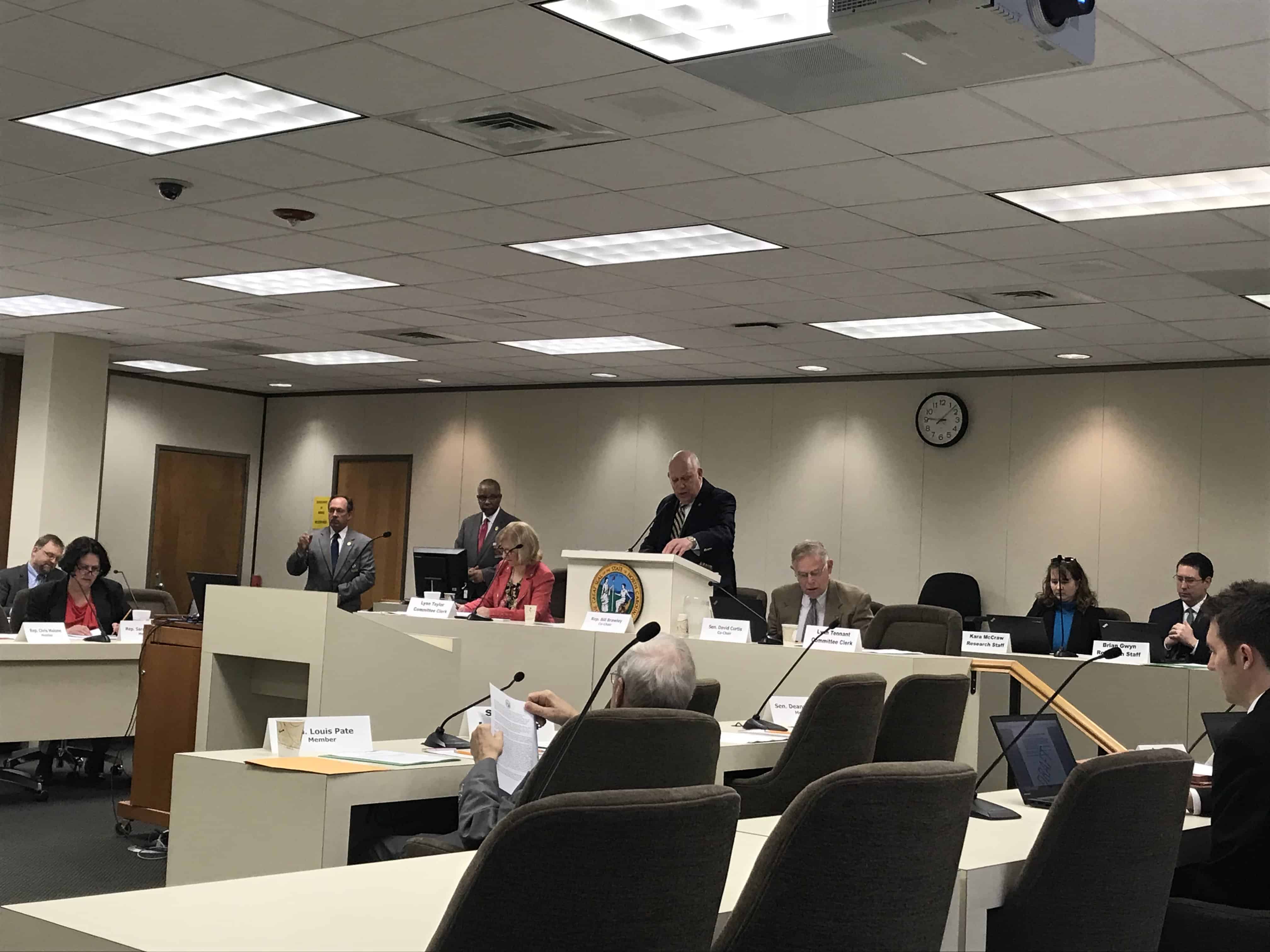“We know enough to know that we don’t really know.”
That is how Representative Bill Brawley (R-Mecklenburg) summarized the third meeting of the Joint Legislative Study Committee on the Division of Local School Administrative Units. The committee met Wednesday to hear evidence on whether or not school district size impacts fiscal efficiency and student outcomes. There was no definitive conclusion about the effects of district size.
Researchers Eric Houck and Kevin Bastian, both from the University of North Carolina at Chapel Hill, testified to the committee about the research findings on school district size, fiscal efficiency, and student outcomes. The full presentation is embedded below.
Bastian started the presentation by noting that for much of the country’s history, school districts have been in the process of consolidating rather than breaking apart. According to Bastian, the country moved from 200,000 unique public schools in the 1940’s to 87,000 in 2009. Because of this trend, there is very little research on the effects of de-consolidation, or breaking districts apart. Throughout the presentation, both Houck and Bastian emphasized the lack of rigorous evidence, cautioning legislators against making consequential decisions based on the little research available.
District size and fiscal efficiency: A U-shaped curve
Bastian said many districts have consolidated to capitalize on economies of scale, or the idea of increased value as scale increases. For school districts, the idea is that as a district gets larger, the average cost of educating each student decreases — in other words, the district is more efficient.
However, the research does not point to an optimal size for school districts. Houck summed up the available research, stating: “The overall consensus seems to be that district size operates along a U-shaped curve. Districts are very inefficient when they are small, there is a sweet spot in the middle where they operate efficiently, and that efficiency drops off as districts get larger.”
Houck cited a 2002 literature review that found an efficiency threshold of about 15,000 students — that is, as enrollment increases above 15,000, districts become less efficient. A 2018 study on Kansas found a threshold of 10,000 students, and a 2002 study found as districts get larger, administrative cost savings are offset by an increase in transportation costs. Houck and Bastian pointed out that for large districts like Wake and Charlotte-Mecklenburg, they would have to split into multiple districts to get to the efficiency threshold of 10-15,000 students.
Additionally, the composition of students in the school district can impact efficiency. Houck said schools and districts with greater concentrations of high-need students have higher costs, which can outweigh efficiency gains.
Houck qualified these findings, stating most of the available research only looks at proficiency levels, not growth, and some studies control for very few outside variables, meaning it is unclear if the outcomes are driven by district size or some other mechanism. Overall, Houck concluded there is no optimal size for school districts and much more research is needed, especially on the impact of school district size versus school size.
Research on impact of district size on student achievement is “a mixed bag”
Bastian presented findings from the research on district size and student achievement. He concluded the research is a mixed bag.
Some studies find smaller school districts are associated with higher school-level achievement (see the slides for specific studies). Some studies find larger school districts are associated with higher school-level achievement. Some studies find the impact of district size depends on the socioeconomic status of the surrounding community: in more affluent communities, larger school districts are associated with higher student achievement whereas in poorer communities, larger school districts are associated with lower student achievement.
Bastian was quick to point out several flaws in the research. First, most of the studies were either conducted in the 80’s and 90’s or use data from the 80’s and 90’s. Not only has the education landscape changed significantly since then, but the quality of administrative data sets has also improved drastically.
Secondly, as Houck mentioned, many of the studies controlled for few outside variables and used just one or two years of data. While some studies did find an association between district size and student achievement, Bastian argued it could be the case that some other factor is causing the association — what economists call omitted variable bias.
Additionally, the majority of the studies used aggregate school-level data instead of student-level data. This makes it difficult to draw precise conclusions. Bastian said, “There is a lot of variation that is not being explored.”
Finally, Houck and Bastian noted that few studies explored the interaction between school district size and individual school size. Bastian said there is convincing evidence that students perform better in small schools. However, a small district does not necessarily mean that the school populations are smaller. A small district could have one large school whereas a large district could have many small schools, and the research so far does not explore the nuances involved here.
Moving forward
Committee members will meet again on Wednesday, April 4 to hear from school and district representatives about innovative programs that show promise, according to Rep. Brawley. The presentations will include Charlotte Mecklenburg Schools’ Project Lift, Sugar Creek Charter School, and Community High from Buncombe County among others.



